Science Daily News | 18 Jun 2023

Views (132)
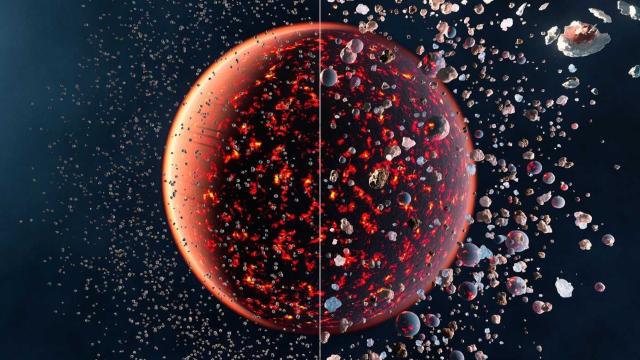
Coastal areas of India's Gujarat state return to normalcy after cyclone
Some 1,500 villages were still without electricity in India's western state of Gujarat, officials said on Saturday, as coastal areas recovered from the impact of this week's cyclone Biparjoy. That was down from initial outages in more than 4,600 villages in Saurashtra and Kutch, where the cyclone made landfall on Thursday night. In many villages, power had been cut off as a precautionary measure to avert any dangerous incidents during the storm, Gujarat Energy Secretary Mamta Verma told Reuters.
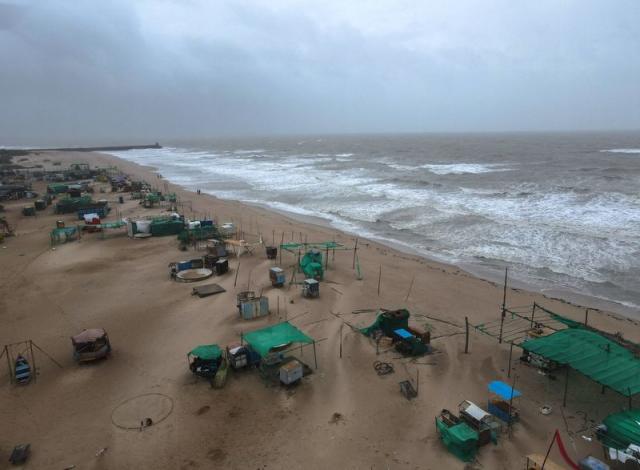
By Sumit Khanna
AHMEDABAD (Reuters) - Some 1,500 villages were still without electricity in India's western state of Gujarat, officials said on Saturday, as coastal areas recovered from the impact of this week's cyclone Biparjoy.
That was down from initial outages in more than 4,600 villages in Saurashtra and Kutch, where the cyclone made landfall on Thursday night.
In many villages, power had been cut off as a precautionary measure to avert any dangerous incidents during the storm, Gujarat Energy Secretary Mamta Verma told Reuters.
Heavy rains forecast for Saturday continued to lash northern districts of the state, causing flooding.
However, ports along the coastline including Pipavav Port and Kandla Port said they had resumed operations, while the Adani owned Mundra Port was due to restart operations from Saturday evening.
The storm caused extensive damage, especially to power infrastructure, uprooting thousands of electricity poles and damaging overhead power lines.
"Our teams are working on the ground to restore electricity supply and supply of drinking water. Repairing of damaged roads and other physical infrastructure is also being undertaken on a priority basis," said Kamal Dayani, Gujarat's revenue secretary.
More than 700 homes in the eight coastal districts of Gujarat suffered full or partial damage, according to the state government.
However the only deaths recorded were those of two shepherds who died while trying to prevent their cattle being swept away during heavy rains and floods, hours before the cyclone made landfall.
Early warnings, accurate identification of vulnerable areas and timely evacuations helped India to avert major casualties. Authorities in India and neighbouring Pakistan evacuated more than 180,000 people from vulnerable areas as the cyclone approached.
(Writing by Swati Bhat; Editing by Frances Kerry)
Large Hadron Collider may be closing in on the universe's missing antimatter
Physicists at the Large Hadron Collider are closing in on an explanation for why we live in a universe of matter and not antimatter.
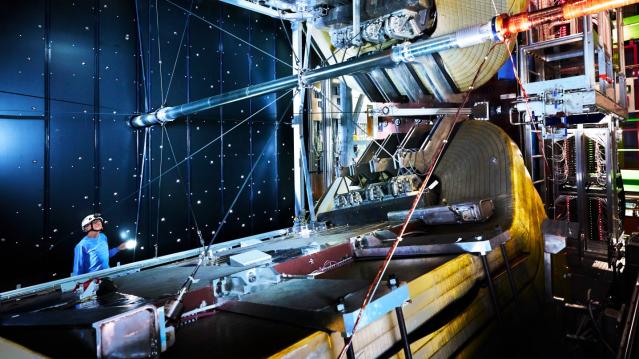
Physicists at the Large Hadron Collider (LHC) are closing in on an explanation for why we live in a universe of matter and not antimatter.
Physicists call this symmetry-breaking a "charge-conjugation parity (CP) violation." One way to envisage it is to consider the rotational symmetry of a particle. Quantum physics theory holds that particles are not solid objects but rather strange little bodies that act like waves along a "wave function." Ordinarily, when you spin that wave function around 360 degrees, the properties of the particle should not change. But when there is a CP violation, the properties of some particles can change — for instance, their quantum spin can alter from 1/2 to –1/2.
Now, analysis of new and more comprehensive results from the LHCb experiment has measured more precisely than ever before the two most important parameters in the CP-violating decay of these mesons.
Probing the decay of approximately 349,000 mesons, the LHCb team measured the angle at which the particles that come from the decay of the mesons were emitted, and the time taken for the mesons to decay. Both properties vary, depending on whether the meson is a matter or antimatter particle.
In particular, the time taken for a meson to decay (which is on the scale of tenths of a nanosecond) is dependent on the quantum state of the meson.
RELATED STORIES:
Experiments have observed that mesons are able to oscillate between their matter and antimatter states, which have ever-so-slightly different masses. This is because mesons exist in a state of "mixing:" they are a mixture of their matter and antimatter states, which allows them to oscillate back and forth between those states.
"These measurements are interpreted within our fundamental theory of particle physics, the Standard Model, improving the precision with which we can determine the difference between the behavior of matter and antimatter," said Parkes. "Through more precise measurements, large improvements have been made in our knowledge."
The LHCb team was able to measure these properties with unprecedented accuracy. Although the decay of mesons will not fully answer why there is more matter than antimatter in the universe, understanding the symmetry-breaking CP violation at the heart of their decays will help constrain models that do attempt to explain this strange asymmetry, which acted in force at the beginning of time to create a universe dominated by matter.
El Niño is officially here, scientists say
After months of warning, experts have confirmed that the ocean-warming event El Niño is here and will gradually strengthen into the winter, with a potential worldwide climate impact.
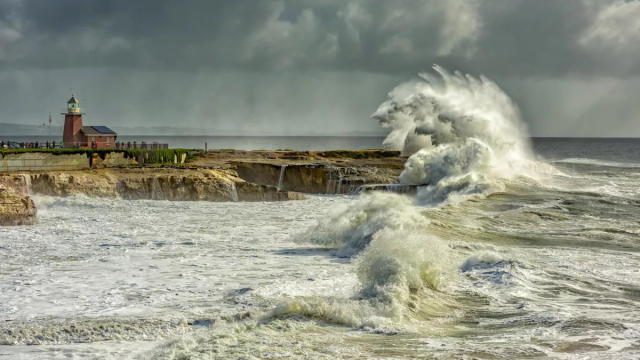
After months of anticipation, the ocean-warming event known as El Niño is officially here and could last until 2024, scientists at the National Oceanic and Atmospheric Administration (NOAA) announced this month.
Related stories
The last El Niño event occurred between February and August 2019, but its impacts were relatively weak.
Average air temperatures tend to be higher in El Niño years than in other years, with far-reaching consequences for global weather patterns. This is compounded by the effects of climate change, which can exacerbate or mitigate certain effects of El Niño, L'Heureux said.
Astronaut watches Cyclone Biparjoy swirl over the Arabian Sea from space (video)
United Arab Emirates astronaut Sultan Al Neyadi shared a video clip from the International Space Station of Cyclone Biparjoy swirling over the Arabian Sea.
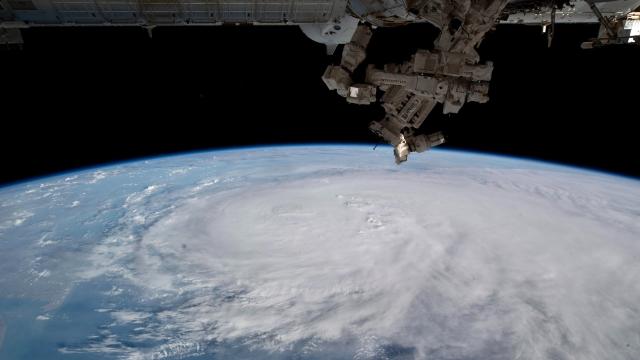
A new video from the International Space Station captures Cyclone Biparjoy swirling over the Arabian Sea.
See more
See more
Since his arrival to the space station, he has captured numerous stunning views of Earth from space, including the city of Aden, Egypt, Kuwait, Jordan, Saudi Arabia, Qatar and Bahrain.
RELATED STORIES:
Record breaker! New fastest star zooms through Milky Way at 5 million mph
Two of six newly discovered runaway stars launched by supernovas have broken the record for the fastest objects of this type ever discovered.
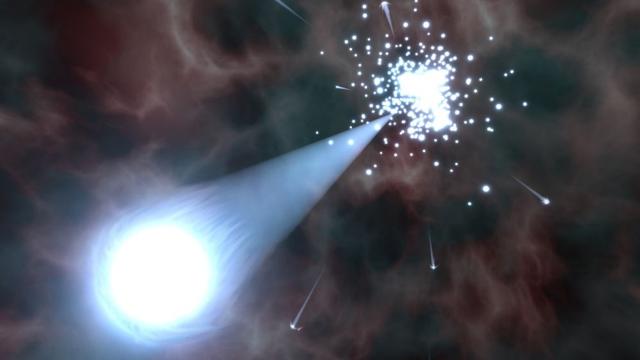
Six new runaway stars were discovered racing through the Milky Way. Two of the super-speedster stars, designated J0927 and J1235, are moving faster than any object of this type ever seen.
"These stars are extraordinary because they are traveling much faster than normal stars in the Milky Way. Because they're faster than the galactic escape velocity, they'll soon be launched into intergalactic space," team leader and Harvard/Smithsonian Center for Astrophysics researcher Kareem El-Badry told Space.com. "We were looking for objects like this, so we had some hope and expectation that they would exist, but their properties were different than we expected."
"They are also much hotter than normal stars — likely a result of their unusual formation history, which involves a supernova exploding right next to them!" the astrophysicist explained.
When material from their donor star companion falls to the surface of a white dwarf, the stellar remnant gathers mass. This means this stellar material donation process can give a white dwarf the critical mass needed to push it over the Chandrasekhar limit, thus triggering a thermonuclear explosion called a Type Ia supernova.
While any supernova would release enough energy to create runaway stars, the team thinks it may take an even more violent and powerful supernova to accelerate these stars to hypervelocity status. These particular explosions are called "helium ignited violent mergers" or "dynamically driven double-degenerate double-detonations," with this mouthful of a moniker shortened to D⁶ supernovas.
D⁶ supernovas happen when white dwarfs strip helium rather than hydrogen from the outer layers of their companion star, which is believed to be another white dwarf (hence double degenerate). This results in a second massive explosion (hence double-detonation), with the companion white dwarf launched as a hypervelocity runaway star as a result.
"The composition of the runaway stars is very unusual," El Badry explained. "Almost all stars in the Milky Way have atmospheres made mostly of hydrogen and helium, but these objects have no hydrogen or helium at all and consist mostly of carbon and oxygen."
This suggests these runaway stars are degenerate white dwarf stars and further supports the idea that they were blasted to extreme velocities by a D⁶ supernova.
El-Badry and his colleagues used the standard light output of Type Ia standard candles to calculate the rate at which runaway stars are launched. They found the creation rate of hypervelocity stars was consistent with the rate at which Type Ia supernovas proceed, suggesting that many of these events could be D⁶ blasts.
This led them to conclude that there is a significantly large population of these superspeed stars racing through the universe that astronomers are yet to discover.
Though discovered within the Milky Way, these new runaway stars, all with velocities in excess of 2.2 million miles per hour (1000 kilometers per second), will one day exit our galaxy, which has an escape velocity of around 1.2 million miles per hour (550 kilometers per second). And the team thinks they won't be the first stars launched by the Milky Way.
RELATED STORIES:
Where did Earth get its water? It was sucked up from space, new theory says
New research suggests our planet was born from a rapid accumulation of tiny pebbles and icy fragments in just a few million years.

Earth may have formed much more rapidly than previously believed after born as tiny millimeter-sized pebbles that accumulated over a period of just a few million years.
The new theory put forward by the team suggests that around 4.5 billion years ago when the sun was an infant star surrounded by a disk of gas and dust, known as a proto-planetary disk, tiny particles of dust would be quickly sucked up by forming planets once they reached a certain size. In the case of the infant Earth, this "vacuuming up" of disk material ensured our planet was supplied with water.
"The disk also contains many icy particles. As the vacuum cleaner effect draws in the dust, it also captures a portion of the ice," team member and Ph.D. student at the Centre for Star and Planet Formation, University of Copenhagen, Isaac Onyett, said. "This process contributes to the presence of water during Earth's formation, rather than relying on a chance event delivering water 100 million years later."
One example of such a chance event would be the bombardment of the planet with water-dropping icy comets during the end stages of its formation.
"If that is how Earth was formed, then it is pretty lucky that we have water on Earth," Schiller said. "This makes the chances that there is water on planets outside our solar system very low."
The knowledge accumulated by the scientists led them to theorize that with the reliance on chance diminished, there is an increased possibility that other planets have abundant water.
RELATED STORIES
"This theory would predict that whenever you form a planet like Earth, you will have water on it," team member and Globe Institute professor Martin Bizzarro said. "If you go to another planetary system where there is a planet orbiting a star the size of the sun, then the planet should have water if it is in the right distance."
0 Likes
